Master of Computer Applications (MCA - VTU)
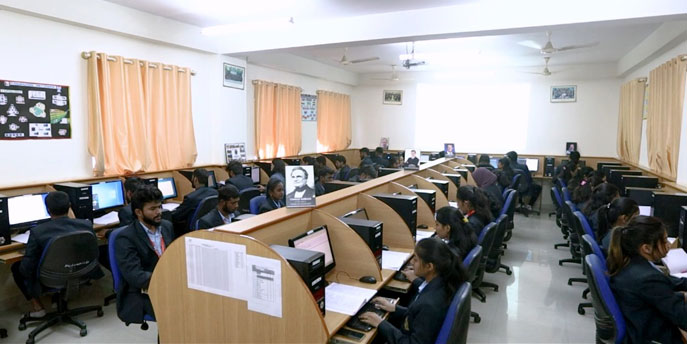
About Us
Explore, Learn, Succeed: Your Pathway to Knowledge
The Department of Master of Computer Applications (MCA) was started in the year 2012, with an intake of 60 students and current intake is 90 students. The Department of Master of Computer Applications, Brindavan College of Engineering is approved by All India Council for Technical Education (AICTE), recognized by UGC and is affiliated to Visvesvaraya Technological University. Brindavan College of Engineering is also awarded with NAAC “B++” grade
In this era of technological explosion, the department is dedicated to maintain a high standard of excellence through quality, technology and innovation. The MCA program seeks to prepare participants for high-level careers in the ever-expanding field of computer applications. It comprises a comprehensive and integrated sequence of courses aiming to develop knowledge and skills in all areas of computer applications.
VISION AND MISSION
Inspiring Innovation, Shaping Tomorrow
Imparting knowledge of developing Computer Applications to meet the global business needs and social responsiveness among the students
MISSION
To achieve academic excellence in developing computer applications through advanced software and hardware tools and technologies with modern teaching aids.
To bridge the gap between industry and academia based on industry Internships.
Motivating students with value based skills and ethics to make them responsible citizens

Salient Features
Shaping Tomorrow, Today

ICT Enabled Digital Classroom

Highly Experienced Faculties with Hands on Industry Experience.

Well-Equipped Computer Lab

Highly rich Library contented with 10,000 books and various Magazines, News Paper, National Journals.

Student Friendly Environment which gives them “At Home” feels

Placement and Training assistance given

Having proctor /Mentor system at individual basis.

Following Zero Tolerance policy for Ragging or any sort of Harassment

Students are given a platform to explore their ideas and creativity which shapes them to become a leader of tomorrow
POs are statements that describe what students are expected to know and be able to do upon graduating from the program. These relate to the skills, knowledge, analytical ability attitude and behaviour that students acquire through the program.
At the end of the Master of Computer Applications program, students are expected to have developed the following program specific outcomes
PROGRAM SPECIFIC OUTCOMES
Analyse, design, build and test IOT and Data Analytics models with python Tools.
Understand and Develop network based Applications with Linux and Network Simulators.
Able to handle and implement any type of complex problems to simplification with software tools and technologies.
PROGRAM EDUCATIONAL OBJECTIVES
Master of Computer Applications is a two-year full-time programme, aimed at nurturing and training young minds with technical skills of Developing Computer Applications.
To continue a long term professional development in computing that contributes in self and societal growth.
To intensify various carrier opportunities in Computer Applications by exposer to software industry, Research and recent technologies.

ATTENDANCE
In each Semester a candidate should be considered to have successfully undergone the prescribed Course of study if the candidate has attended at least 85% of the classes in each subject (Theory, Lab & project).
USP
Your Unique Advantage: Experience the Difference with Us








COURSE MATRIX
PROGRAM DETAILS
Comprehensive Learning: Explore the Depths of Our Programs
Master of Computer Applications is two years, four semesters program. This program is designed for the students, who want to pursue their career in the field of Computer Applications Development. The program covers the major areas ranging from fundamentals to the advanced concepts through the subjects offered in the program. Along with programming languages, students are exposed to subjects like Research Methodology & IPR, IT Project Management, Artificial Intelligent, Deep learning ect... The students develop industry-oriented applications in the form of mini and main projects in second, third and fourth semesters respectively along with students also study Technical Seminar, Societal project Implementation and Minimum one Online Technical Course.
Semester I
| Sl. No | Paper Code | Subjects | Hours per Week | Credits |
|---|---|---|---|---|
| 01 | MMC101 | Programming and Problem Solving in C | 4 | 4 |
| 02 | MMC102 | Discrete Mathematics and Graph Theory | 4 | 3 |
| 03 | MMC103 | Database Management Systems (DBMS) | 3 | 3 |
| 04 | MMC104 | Operating System | 3 | 3 |
| 05 | MMC105 | Web Technologies | 3 | 3 |
| 06 | MMCL106 | DBMS and Web Technologies Laboratory | 4 | 2 |
| 07 | MRI107 | Research Methodology and IPR(Online) | Online 12 Weeks Course |
Semester II
| Sl. No | Paper Code | Subjects | Hours per Week | Credits |
|---|---|---|---|---|
| 01 | MMC201 | Machine Learning and Data Analytics using python | 4 | 4 |
| 02 | MMC202 | Object Oriented Programming using JAVA | 4 | 4 |
| 03 | MMC203 | Data Structure and Algorithms | 4 | 4 |
| 04 | MMC204 | Software Engineering | 4 | 3 |
| 05 | MMC205 | Web Application Development | 4 | 3 |
| 06 | MMC206 | Object Oriented Programming using JAVA Laboratory | 4 | 2 |
| 07 | MMCL207 | Data Structure and Algorithms Laboratory | 4 | 2 |
| 08 | MMC258x | Ability/Skill Enhancement | ||
| 09 | Ability Enhancement Courses (AEC)/ Skill Enhancement Course (SEC) [Offline/Online] |
Semester III
| Sl. No | Paper Code | Subjects | Hours per Week | Credits |
|---|---|---|---|---|
| 01 | 22MCA31 | Data Analytics Using Python | 3 | 3 |
| 02 | 22MCA32 | Internet of Things | 3 | 3 |
| 03 | 22MCA33X | Professional Elective 3 | 4 | 3 |
| 04 | 22MCA34X | Professional Elective 4 | 4 | 3 |
| 05 | 22MCAL35 | Project Work Phase 1 | 2 | 2 |
| 06 | 22MCAL36 | Data Analytics Lab with Mini-project | 2 | 2 |
| 07 | 22MCAL37 | IoT Laboratory with Mini Project | 2 | 2 |
| 08 | 22MCAL38 | Societal Project | 2 | 2 |
| 09 | 22MCA39 | Internship | 6 weeks | 6 |
Semester IV
| Sl. No | Paper Code | Subjects | Hours per Week | Credits |
|---|---|---|---|---|
| 01 | 22MCA41X | Professional Elective 5 | 4 | 3 |
| 02 | 22MCA42X | Professional Elective 6 | 5 | 3 |
| 03 | 22MCA43 | Technical SEMINAR | 2 | 2 |
| 04 | 22MCA44 | Project work phase -2 | 5 | 16 |
Elective-III
| Paper Code | Subjects |
|---|---|
| 22MCA331 | Block chain Technology |
| 22MCA332 | Cloud Computing |
| 22MCA333 | Digital Marketing |
| 22MCA334 | Object Oriented Modeling and Design |
| 22MCA335 | NOSQL |
Elective-IV
| Paper Code | Subjects |
|---|---|
| 22MCA341 | Advanced Java and J2EE |
| 22MCA342 | Introduction to Dot Net framework for application development |
| 22MCA343 | Knowledge Engineering |
| 22MCA344 | Software Testing |
| 22MCA345 | Virtual Reality |
Elective-V
| Paper Code | Subjects |
|---|---|
| 22MCA411 | Deep Learning |
| 22MCA412 | Big Data Analytics |
| 22MCA413 | Wireless Ad Hoc Networks |
| 22MCA414 | Software Project Management |
| 22MCA415 | Software Defined Networks |
Elective-VI
| Paper Code | Subjects |
|---|---|
| 22MCA421 | IT Project Management |
| 22MCA422 | Semantic Web and Social Networks |
| 22MCA423 | Game Designing |
| 22MCA424 | Agile Technology |
| 22MCA425 | Software Metrics & Quality Assurance |
Course Outcomes (CO’s)
| Subject Code | Course Outcomes (CO’s) |
|---|---|
| MMC101 | CO1: Demonstrate knowledge on C Programming constructs. CO2: Develop simple applications in C using basic constructs CO3: Design and implement applications using arrays and strings CO4: Develop and implement modular applications in C using functions CO5: Develop applications in C using structures and pointers |
| MMC102 | CO1: Understand basic concepts of mathematical logic for analyzing
propositions and proving theorems and Use sets and its operations
algebraically for solving real world problems.
CO2: Understand the basics of graph theory and their various properties. CO3: Model problems using graphs and to solve these problems Algorithmically CO4:Apply graph theory concepts to solve real world problems in Computer Networking, Telecommunication Infrastructure, Transportation etc |
| MMC103 | CO1: Demonstrate the basic elements of a relational database management system CO2: Ability to identify the data models for relevant problems. CO3: Design entity relationship and convert entity relationship diagrams into RDBMS and formulate SQL queries on the respect data. |
| MMC104 | CO1: Describe the elements and various functionalities of the operating system CO2: Apply the techniques of process management and demonstrate process synchronization deadlock handling. CO3:Analyze various memory management strategies and file handling. |
| MMC105 | CO1: Explain the fundamental concepts of web technologies CO2: Create the web pages using HTML and CSS. CO3: Implement user interactive web pages CO4: Demonstrate the single window applications using AngularJS. |
| MMCL106 | CO1: Create database objects. CO2: Design entity-relationship diagrams to solve given database applications. CO3:Implement a database schema for a given problem. CO4: Formulate SQL queries in Oracle for the given problem. CO5: Apply normalization techniques to improve the database design for the given problem. CO6: Build database and verify for its appropriate normalization for any given problem |
| MMC201 | CO1: Demonstrate an understanding of machine learning concepts
and techniques.
CO2: Perform data preprocessing and exploratory data analysis using Python. CO3: Develop and evaluate machine learning models using Python libraries. CO4: Apply machine learning algorithms to real-world data problems. CO5: Integrate data analytics and machine learning models into practical applications. |
| MMC202 | CO1: Solve the given problem by applying OOP using java. CO2:Apply the fundamentals of Inheritance. CO3:Identify and list the different applications of event handling. |
| MMC203 | CO1: Demonstrate an understanding of fundamental data structures
and algorithms.
CO2: Implement and manipulate data structures such as arrays, linked lists, stacks, queues, trees, and graphs. CO3: Develop algorithms for searching, sorting, and optimization problems. CO4: Analyze the efficiency and correctness of algorithms. CO5: Apply data structures and algorithms to solve complex problems in various domains. |
| MMC204 | CO1: Describe the fundamental software process models and the principles of
requirement analysis.
CO2: Implement design patterns and architectural styles to construct software systems. CO3: Utilize the software testing methodologies to ensure the quality and reliability of software. CO4: Analyze the integration of software project management practices with DevOps principles to improve software delivery and operational efficiency. |
| MMC205 | CO1: Demonstrate an understanding of web technologies and
protocols.
CO2:Develop and deploy web applications using HTML5, CSS3, JavaScript, and modern frameworks CO3: Apply responsive design principles using frameworks like Bootstrap. CO4:Implement dynamic web applications using AngularJS. CO5: Integrate front-end and back-end technologies to create fullstack web applications |
| MMCL206 | CO1: Demonstrate the fundamental data types and constructs of Java Programming by writing executable/interpretable programs. CO2:Illustrate the object oriented principles with the help of java programs. CO3: Develop reusable and efficient applications using inheritance concepts of java. CO4:Learn the object oriented concepts and its implementation in Java. |
| MMCL207 | CO1: Implement the techniques for evaluating the given expression. CO2: : Implement sorting / searching techniques, and validate input/output for the given problem CO3:Implement data structures (namely Stacks, Queues, Circular Queues, Linked Lists, and Trees), its operations and algorithms. CO4: Implement the algorithm to find whether the given graph is connected or not and conclude on the performance of the technique implemented. |
| 22MCA31 | CO1: Understand and comprehend the basics of Python programming.
CO2: Apply knowledge in real time applications CO3: Apply the Data Pre-processing & Data Wrapping CO4: Demonstrate the Web Scraping And Numerical Analysis |
| 22MCA32 | CO1: Analyse the IoT architecture and design along with functional/compute stack and
data management.
CO2: Apply IOT architecture for a given problem. CO3: Analyse the application protocol, transport layer methods for the given business case. CO4:Analyse the application of data analytics for IOT for a given. CO5: Analyse the architecture and develop programming using modern tools for the given use case. |
| 22MCA331 | CO1: Demonstrate the basics of Block chain concepts using modern tools/technologies CO2: Analyze the role of block chain applications in different domains including cyber security. CO3: Evaluate the usage of Block chain implementation/features for the given problem. CO4: Exemplify the usage of bitcoins and its impact on the economy. CO5: Analyze the application of specific block chain architecture for a given problem. |
| 22MCA332 | CO1:Demonstrate the fundamental and core concepts of cloud computing CO2: Compare between parallel and distributed computing CO3: Investigate the system virtualization and outline its role in enabling the cloud computing system model CO4: Compare different deployment and service models of cloud to develop different variety of applications |
| 22MCA333 | CO1: Analyze the use of different electronic media for designing marketing activities CO2: Analyze the role of search engine in improving digital marketing CO3: Analyze role of social media marketing for the given problem CO4:Overcome social media threats with the analysis of technical. |
| 22MCA344 | CO1: Explain the concepts of object-oriented and basic class modelling. CO2: Create class diagrams, sequence diagrams and interaction diagrams to solve problems. CO3: Choose and apply a befitting design pattern for the given problem. |
| 22MCA345 | CO1: Analyse and Manage the Data using CRUD operations. CO2:Apply and Develop the applications using NoSQL. CO3: Realize the concept of Map Reduce its applicability in the real world application development. CO4: Apply the framework of NOSQL to find the solutions. |
| 22MCA341 | CO1: : Interpret the need for advanced Java concepts like enumerations and collections in
developing modular and efficient programs
CO2: Develop Solutions to problems using Arrays, Structures, Stack, Queues. CO3:Illustrate database access and details for managing information using the JDBC API. |
| 22MCA342 | CO1: Build applications on Visual Studio .NET platform by understanding the syntax and
semantics of C#.
CO2: Demonstrate Object Oriented Programming concepts in C# programming language. CO3:Design custom interfaces for applications and leverage the available built-in interfaces in building complex applications. CO4: Illustrate the use of generics and collections in C#. |
| 22MCA343 | CO1: Recognize the fundamental concepts of Artificial Intelligence such as knowledge representation,
problem solving, fuzzy set and expert systems
CO2: Implement the search methods using Python CO3: Use the Connectionist Models for solving problems. |
| 22MCA344 | CO1: Acquire knowledge of basic principles and knowledge of software testing and Debugging and test cases. CO2: Understand the perceptions on testing like levels of testing, generalized pseudo code and with related examples CO3: Analyze the difference between functional testing and structural testing |
| 22MCA345 | CO1:Build application on how VR systems work and list the applications of VR. CO2: Design and implement the hardware that enables VR systems to be built. CO3: Explain the concepts of motion and tracking in VR systems. CO4: Explore the importance of interaction and audio in VR systems. |
| 22MCAL35 | CO1: Demonstrate a sound technical knowledge of their selected project topic. CO2: Undertake problem identification, formulation, and solution CO3: Design engineering solutions to complex problems utilising a systems approach CO4: Communicate with engineers and the community at large in written an oral forms. CO5: Demonstrate the knowledge, skills and attitudes of a professional engineer. |
| 22MCAL36 | CO1:Apply object-oriented programming concepts to develop dynamic interactive Python Applications. CO2: Use the procedural statements: assignments, conditional statements, loops, method calls and arrays CO3: Design, code, and test small Python programs with a basic understanding of top-down Design. CO4: Learn how to create GUI and solve real-world problem using language idioms, data structures and standard library |
| 22MCAL37 | CO1: Design and develop an application for the given problem for the societal/industrial problems. CO2:Develop python program by applying suitable feature for the given problem and verify the output CO3:Build intruder system that sends an alert to the given email |
| 22MCAL38 | CO1: Building solution for real life societal problems. CO2: Improvement of their technical/curriculum skills. |
| 22MCA39 | Gain practical experience within industry in which the internship is done. • Acquire knowledge of the industry in which the internship is done. • Apply knowledge and skills learned to classroom work. • Develop a greater understanding about career options while more clearly defining personal career goals. • Experience the activities and functions of professionals. • Develop and refine oral and written communication skills. • Identify areas for future knowledge and skill development. • Expand intellectual capacity, credibility, judgment, intuition. • Acquire the knowledge of administration, marketing, finance and economics. |
| 22MCA411 | CO1:Illustrate the basics of deep learning for a given context CO2: Apply various deep learning models for the given problem CO3: Realign high dimensional data using reduction techniques for the given problem CO4: Apply and Analyze optimization and generalization techniques for the given problem CO5:Application of latest deep learning techniques and to enhance the results. |
| 22MCA412 | CO1:Apply analytical tools to identify and solve the business problem for a given context. CO2: Analyse various algorithms for handling large volumes of data. CO3: Apply the architecture of HDFS and explain functioning of HDFS clusters CO4: Analyse the usage of Map-Reduce techniques for solving big data problems CO5:Carryout experiments on various datasets for analysis / visualization. |
| 22MCA413 | CO1:Analyze the issues of ad-hoc wireless network
CO2:Evaluate the existing network and improve its quality of service
CO3: Choose appropriate protocol for various applications and design the architecture CO4:Examine security measures present at different levels and identify the possible improvements for the latest version of the ad hoc network IEEE standard CO5:Analyze energy consumption and management in ad-hoc wireless networks |
| 22MCA414 | CO1:Apply theoretical concepts for projects management CO2: Planning for resources allocation with case studies. CO3: Solving problems related to risk identification, cost based analysis, etc. CO4: Apply and Analyze optimization and generalization techniques for the given problem CO5:Managing and working in team. |
| 22MCA415 | CO1:Apply the fundamentals of Software Defined Networks for the given problem CO2: Illustrate the basics of Software Defined Networks Operations and Data flow. CO3: : Apply different Software Defined Network Operations and Data Flow CO4: Analyse alternative definitions of Software Defined CO5:Apply different Software Defined Network Operations in real world problem |
| 22MCA421 | CO1:Recognize knowledge about the basic project management concepts, framework and the
process models.
CO2: Identify knowledge about software process models and software effort estimation techniques. CO3: Define the checkpoints, project reporting structure, project progress and tracking mechanisms using project management principles. |
| 22MCA422 | CO1:Summarize to create ontology and knowledge representation for the semantic web CO2: Solve to build a blogs and social networks CO3: Describe the Modeling and aggregating social network data. CO4: Illustrate the Web- based social network and Ontology |
| 22MCA411 | CO1:Illustrate the basics of deep learning for a given context CO2: Apply various deep learning models for the given problem CO3: Realign high dimensional data using reduction techniques for the given problem CO4: Apply and Analyze optimization and generalization techniques for the given problem CO5:Application of latest deep learning techniques and to enhance the results. |
| 22MCA423 | CO1:Understand basics of game design CO2:Build approaches and key components of video games CO3: Apply Game concept in designing the games CO4: Build visual appearances for games |
| 22MCA424 | CO1:Illustrate the working of Agile Methods, XP CO2: Explain the concept of Coding Standards, Iteration Demo, Reporting CO3: Demonstrate Incremental requirements, Customer Tests, Test-Driven Development, Refactoring (can be attained through assignment or CIE) CO4: Evaluate how to Build Effective Relationships (can be attained through assignment or CIE) |
| 22MCA425 | CO1:Identify and apply various software metrics, which determines the quality
level of software
CO2: Compare and Pick out the right reliability model for evaluating the Software CO3: Discover new metrics and reliability models for evaluating the quality level of the software based on the requirement CO4: Identify and evaluate the quality level of internal and external attributes of the software product |
FACULTY DETAILS

Prof. Rongali YerNaidu
Associate Professor & HoD
Qualification : MCA, (Ph.D)
Experience : 16 years
Specialization : Data Analytics, IOT
Email Id : rynaidu@brindavancollege.com
University Examinations will be held twice in an academic year in Nov/Dec for odd semesters and in the month of May/June for even semesters. And eligible students are allowed to write University exams in regular semester and all the semesters back papers.
Scheme of Examination
Prepare, Perform, Succeed: Your Pathway to Exam Excellence
The Internal Assessment marks are decided for each of the theory and practical subject by conducting 3 tests for 50% , each of 60 minutes duration, and remaining 50% Internal Assessment marks are decided by conducting Assignments & other subject related activities spread over the span of a Semester
The Final Semester Internal Assessment marks for Internship, Project work of a candidate is based on the dissertation and Seminar.
Minimum for pass and declaration of results
Prepare, Perform, Succeed: Your Pathway to Exam Excellence
For a pass in a semester, a candidate shall secure a minimum of 40% of the marks prescribed for a subject in the University Examination (Theory, Practical, Project work) and 50% of the marks in Internal Assessment marks (IAM) and University Examination and University Examination marks & IAM in the aggregate of 50% obtained in all subjects put together.
The candidates who do not satisfy the above-mentioned criteria, shall be deemed to have failed and have to take exams in the subjects in which he has secured less than 40% at the University examination
Promotion to Second year
As per the University 2022-23 guidelines, if any student in first year failed in more the Four subjects then those Students should not be promoted to second year
Career Opportunities
After completing the course, the students will have ample job opportunities in the field of information technology, business and research areas
- The students will have ample job opportunities in the field of information technology, Computer application development, Mobile allocation development, IOT, Data Science and Artificial Intelligence areas.
- Work in government or private sector jobs in different capacities as Programmers, IT Officers, Database Administrators, Data Scientists, Analysts etc.
- Work in the areas of software development, testing, designing, networking etc
- Set up independent business for multimedia and other graphics applications.
- Develop Websites and Mobile applications…etc
- Work in the areas of web development, Data Analyst, Tech support etc…
- Set up independent business for IT applications.
- Web Developer using the tools of HTML 5, CSS, Java Script, JQuery, Angular JS, PHP, Bootstrap, Ruby, Rails and AJAX.
- Database Administrator using Oracle, MySql etc..
- Networking Administrator using Linux/Unix and NS2 Tools
- Software developer using C, C++, JAVA and J2EE, Python, .Net, IOT Tools.
- Pursue higher studies such as M.Phil, Ph.D. etc.
- Teaching opportunities ie eligible to teach BCA, BSc(CS), MCA, MSc(CS) etc.. courses in different colleges/Universities.
FACULTY DETAILS

Prof. Rongali Yer Naidu
Assistant Professor & HoD
Qualification : MCA, (PhD)
Experience : 18 Years
Specialization : IOT, Data analitics
Email Id : rynaidu@brindavancollege.com
Area Of Interest : Data Analytics, AI

Prof. Jabeen Taj MK
Assistant Professor
Qualification : M.tech, (Ph.D)
Experience : 7 Years
Specialization : Computer networks
Email Id : tajmkjabeen8@gmail.com
Area Of Interest : Machine learning,AI
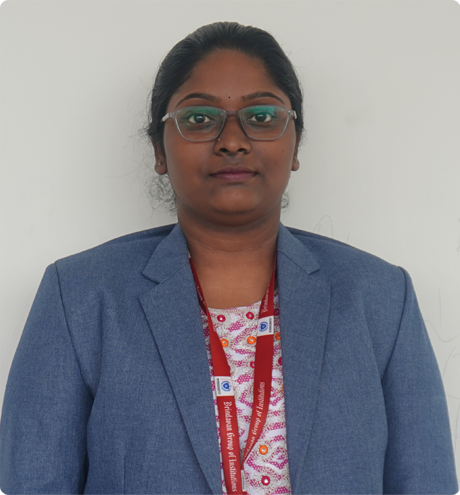
Prof. Chandana S
Assistant Professor
Qualification : MCA
Experience : 1 Year
Specialization : Artificial Intelligence, Big Data Analytics, Cloud Computing, Cyber Security
Email Id : chandanas0512@gmail.com
Area Of Interest : Artificial Intelligence, Machine Learning
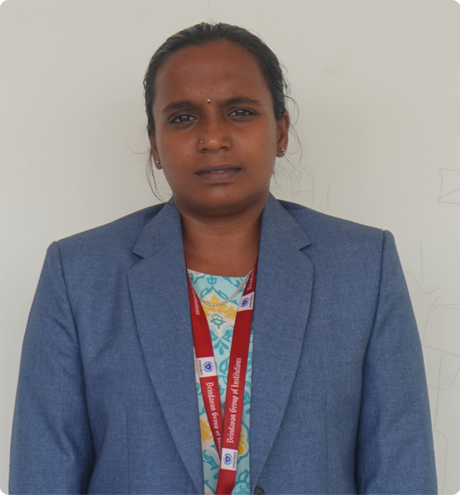
Prof. Kavya K S
Assistant Professor
Qualification : MCA
Experience : 1 Year
Specialization : Machine Learning, Big Data Analytics, Cloud Computing
Email Id : kavyaks3344@gmail.com
Area Of Interest : Artificial Intelligence, Machine Learning
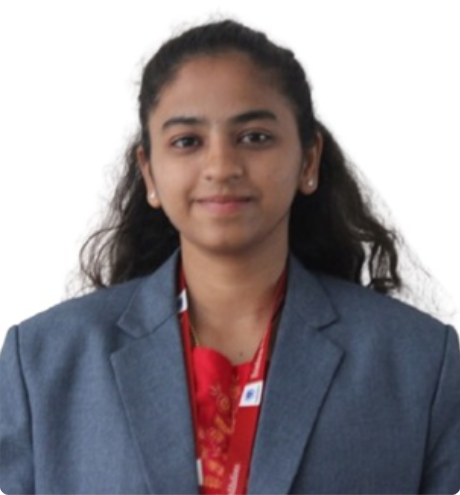
Prof. Pooja T S
Assistant Professor
Qualification : MCA
Experience : 1.4 Months
Specialization : Cloud computing, Python
Email Id : poojats@brindavancollege.com
Area Of Interest : Cloud computing
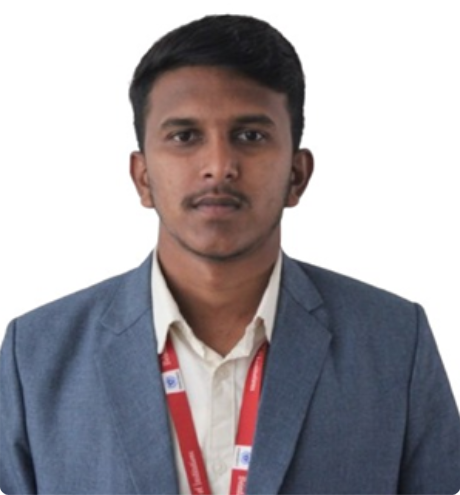
Prof. Gowtham H S
Assistant Professor
Qualification : MCA
Experience : 1.4 Months
Specialization : Python
Email Id : gowthamhs@brindavancollege.com
Area Of Interest : Machine Learning
